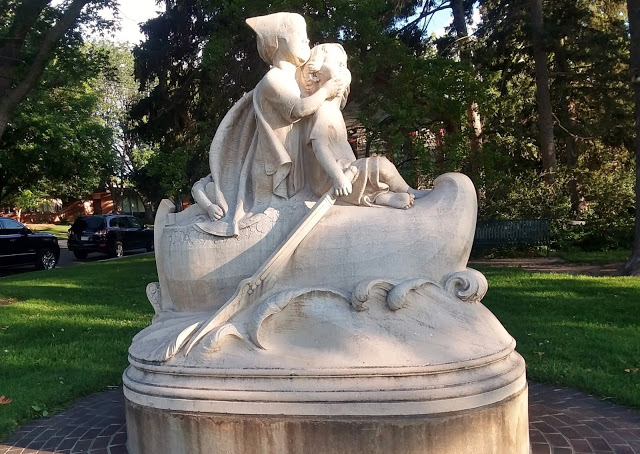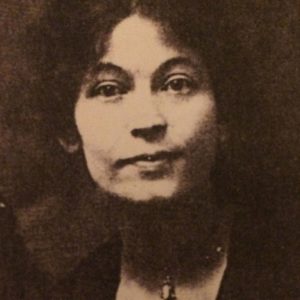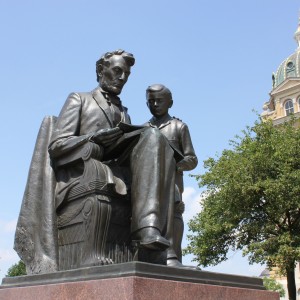Mabel Landrum Torrey
Mabel Rivers Landrum Torrey was best known for her sculptures of children. A number of her works were inspired by the poetry of Eugene Field.
She was born Mabel Rivers Landrum in a sod-roofed house in Sterling, Logan, Colorado on 23 June 1886; she had three siblings. Her father, John Walter Landrum, was a local judge. Her mother was Elizabeth Katherine Davis, a native of Mississippi.
Mabel studied at the Colorado State College of Education and worked as a schoolteacher in her hometown of Sterling. Upon saving enough money, she traveled to Chicago to study sculpture at the School of the Art Institute of Chicago in 1912. Her teachers in Chicago included sculptor Charles Mulligan. The training provided at the Art Institute was strongly classical, and focused on “diligent training until one could manipulate clay into idealized human forms that conveyed abstract concepts.”
In 1916, she married Fred Torrey (1884-1967), who was also a student in sculpture at Art Institute. They moved into Lorado Taft‘s Midway Studios, a historic artist colony in Chicago. At that time Mabel Torrey taught modeling at the Francis Parker School in Chicago. Mabel and Fred Torrey’s only child, Elizabeth Jane Torrey, was born on October 5, 1920. “Betty”, as she was called, was to serve as the model for at least 14 of Mabel Torrey’s sculptures. The Torreys resided at Midway Studios until the artist’s colony dissolved in 1947, when the University of Chicago took over the building.

Mabel Torrey received her first major commission from the Mayor Robert W. Speer of Denver, Colorado in 1918. The resulting work, the Wynken, Blynken and Nod Fountain, was dedicated in 1919 in Denver’s Washington Park. The sculpture, which was based on the Eugene Field poem Dutch Lullaby, remains a major Denver landmark. In the 1930 edition of his History of American Sculpture, Lorado Taft described the fountain as Torrey’s most important work.
Unlike her husband, Mabel Torrey did not become an “associated artist” of Taft’s Midway Studios. She nonetheless maintained a steady stream of sculpture commissions while also lecturing actively.
When the Torreys moved to Des Moines, Iowa at their daughter’s urging in 1957, Mabel Torrey was able to turn this into a profitable business by connecting with a local manufacturer of art porcelain.
Torrey’s final sculpture, dedicated in 1961, was a collaboration with her husband. This work of art was one of the few sculptures on which the two collaborated. The depiction of the Abraham Lincoln was created by Fred Torrey, while the image of Tad Lincoln was sculpted by Mabel.
Mabel died in 1 April 1974, in Ames, Iowa, after a long illness.
Mabel Landrum Torrey’s artwork was exhibited at the Annual Exhibition of Works by Chicago and Vicinity Artists, AIC, 1916-26 (7 times); Annual Exhibition of Oil Paintings & Sculpture by American Artists, AIC, 1924, 27; Chicago Galleries Association; A Century of Progress Exhibition of Paintings & Sculpture, AIC, 1933, 1934; Garfield Park Conservatory, Chicago; and the Woman’s World Fair, Chicago, 1925 and 1928.
Her awards and recognition included: Prizem Chicago Galleries Association, 1930; Cincinnati Children’s Hospital; Wnyken, Blynken and Nod Fountain, Denver, CO; and University of Chicago Elementary School.

